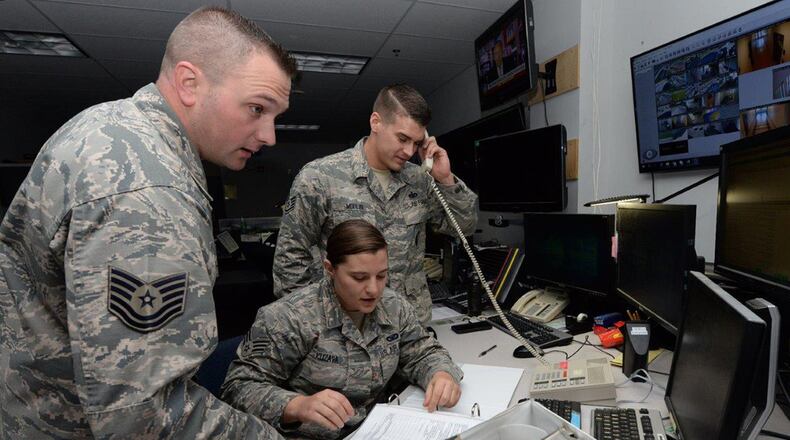The section’s primary responsibility is to make sure more than 16,000 base alarms and more than 100 camera systems stay operational at all times. ESS is also responsible for setting up mobile cameras for all special events hosted on base.
“In our profession, we’re ‘jacks of all trades’ trained and skilled in various areas,” said Gillette. “Our areas of expertise range from troubleshooting alarms and cameras to IT equipment.”
On top of managing the Air Force Materiel Command’s largest alarm system, ESS functions as information technology equipment custodians, who account for and track computer equipment for their unit. Also, as information assurance officers, they resolve IT hardware and software issues.
This past year, ESS was able to acquire $450,000 in replacements and upgrades for their alarms and cameras. In addition, all computers were upgraded as well as the network infrastructure that runs the base’s alarm system.
Wright Patterson marks 100 years of aviation achievement
A first for ESS was obtaining software for their wireless cameras approved on the Air Force Evaluated Product List and acquiring a graphics package for their alarm systems.
An upcoming project is underway which includes a joint effort with other base units on establishing a new commercial gate.
“We’re successful at what we do because of the help from our wing counterparts, such as the Communications Squadron, Operations Squadron and Civil Engineer Group,” explained Gillette. “Comm helps us keep our alarm network and servers online, OSS helps keep our cameras running, and CE assists with work orders across the base. … We do the best we can and if we have issues, we just reach out to them.”
Among the various responsibilities in more than 1,600 areas across the base, ESS has to stay on top of managing an alarm custodian list of about 1,200 personnel, in which they provide training and assistance.
“Our alarm systems and requirements are constantly growing,” said Gillette. “Because of Wright-Patt’s research and development mission, we have new installs all the time and we have to make sure all facilities are compliant according to Air Force Instructions prior to submitted requests to the wing commander to get approval.”
Staff Sgt. Joshua Modlin, assistant non-commissioned officer in-charge of ESS, added, “It’s very imperative that we keep everything up and running since the research and development units use the alarms to protect their assets and projects.”
Other than dealing with alarm incidents, regular days for ESS normally consist of fitness training in the morning, checking emails, running reports for routing, and finding ways to improve processes and training.
Part of their daily tasks is to keep the Base Defense Operations Center informed. The BDOC is the nerve center of Security Forces Operations. In addition, ESS ensures all base cameras are operational so that the BDOC, fire department and other select organizations have “eyes” on critical parts of the base.
The base populace normally sees Security Forces on flight line duty or patrolling the area. These positions are their core duties. If an individual continues to exemplify superior performance they can earn more responsibility and qualify for special duty assignments which helps with career progression.
ESS is considered a staff position that SFS personnel are assigned to on a rotational basis. The position requires a high security clearance, is always on-call, and is normally a two-year tenure.
“Because of all the technological advances made, we (Security Forces) have progressed just as the rest of the world has,” said Howell. “We didn’t have this type of access to technology when I was an Airman. Take, for instance, flight line security, where our people would walk from wingtip-to-wingtip patrolling the aircraft. You don’t see that much now. … A lot of it is done by cameras and intrusion detection systems. There are still places that require walking around aircraft, but it’s a rarity now.”
Gillette and Modlin credit the success of ESS to their leadership’s support and help from their predecessors.
About the Author
